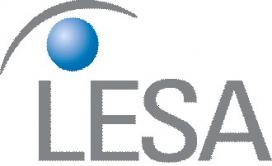Center Spin-off Aims to Make LED TVs, Monitors Faster and Cheaper to Produce and Use
SelfArray Inc. was spun out of the Center for Lighting Enabled Systems & Applications (LESA), an NSF-funded Engineering Research Center (ERC), headquartered at Rensselaer Polytechnic Institute (RPI), with technology that uses magnets to levitate materials, enabling faster, less expensive production of TVs and monitors, while reducing their energy consumption.
The companydemonstrated “diamagnetic levitation,” a patent-pending LED assembly process for direct-view LED pixel displays that lowers current equipment costs and operating expenses, and speeds up assembly rates. This enables the use of efficient, low-power LEDs for high-resolution, high-quality displays with greatly reduced energy use.
Producing TVs using 4K and 8K display resolution increases energy use by as much as 30% relative to lower-resolution displays. Using direct-view LED displays can address both the demand for extremely high viewing quality and the need for significant reductions in display energy consumption. However, it is extremely costly to directly place the huge quantities of LED pixels for high resolution, direct-view LED display fabrication.
SelfArray’s technology overcomes these barriers and will create a new, cost-effective way to manufacture large-area, high resolution, extremely efficient pixelated LED displays. The ERC’s research has shown that with diamagnetic levitation, low friction allows the levitating objects to be moved very quickly, leading to high assembly speeds. This will revolutionize the manufacturing of high-resolution computer monitors, TVs, and large screen outdoor displays, providing new levels of display quality with significantly reduced energy use compared to current LCD and OLED technologies.



